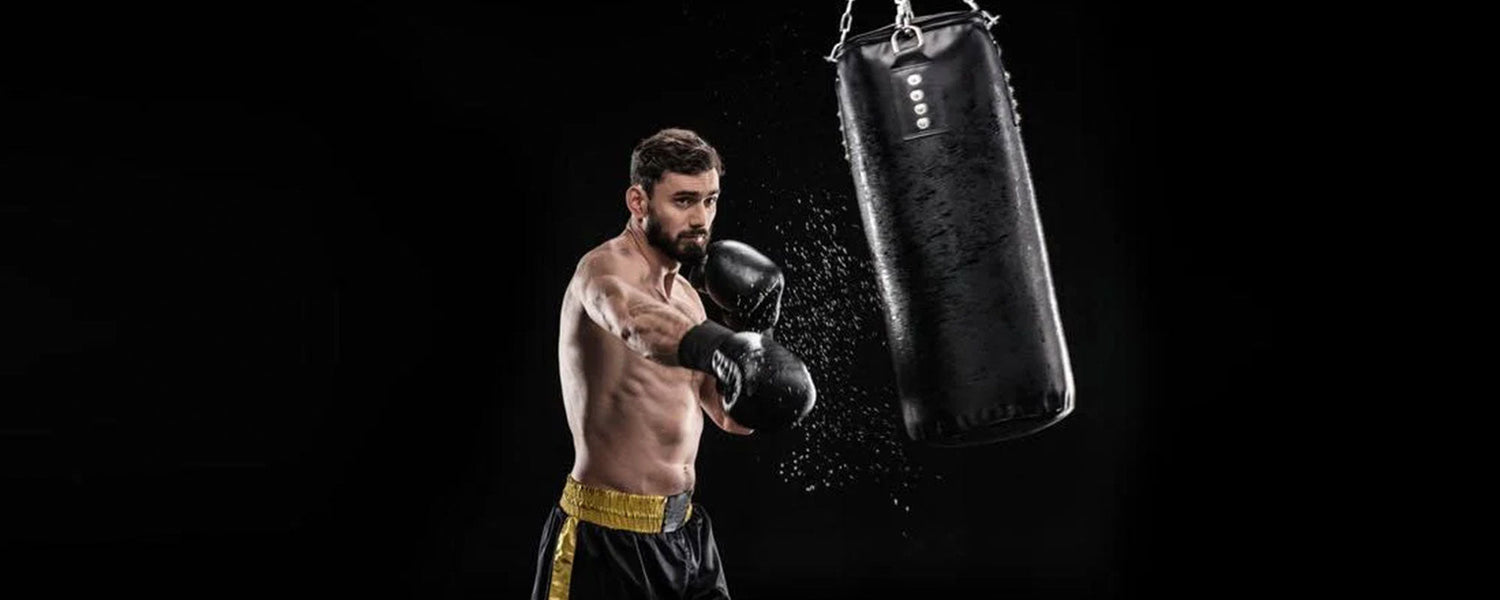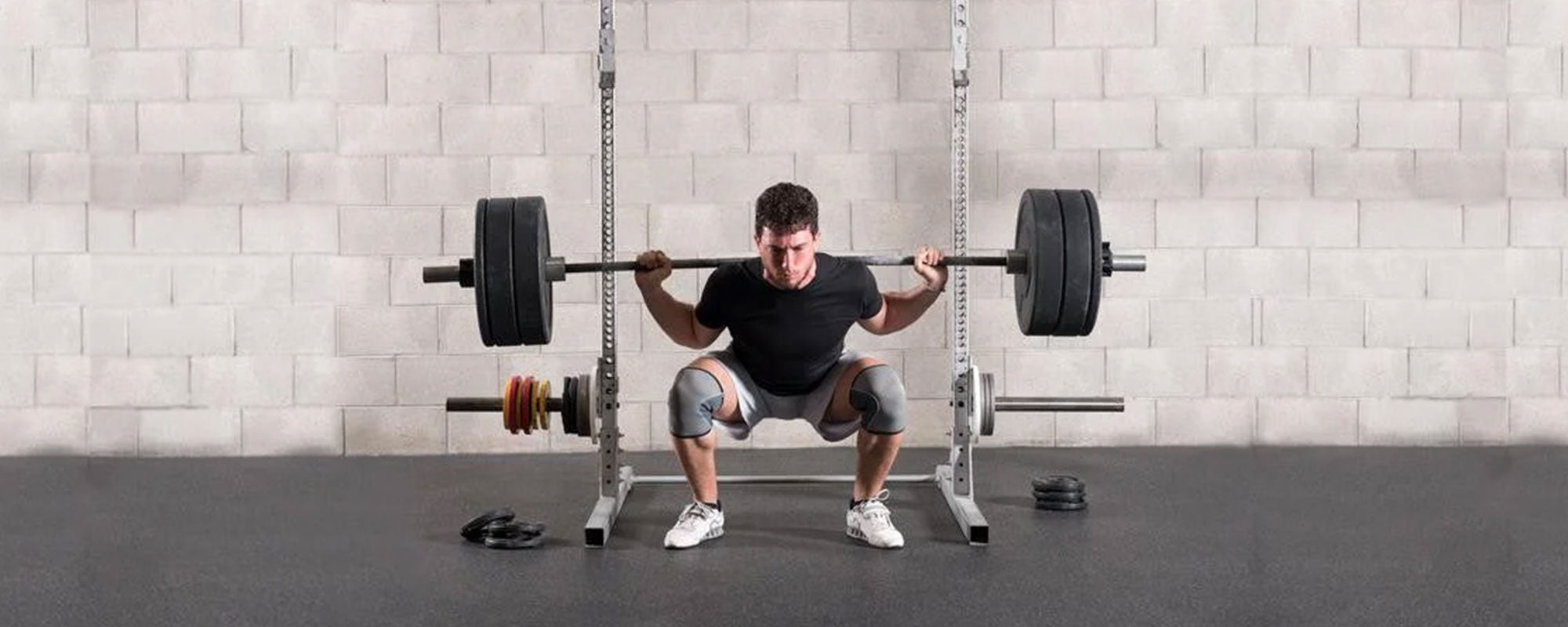Table of content
Heavy bag training is considered a staple in a boxer’s training routine. From a beginner to a pro boxer, all use heavy bag training as a tool for improving their boxing skills and techniques. Furthermore, this is a complete whole-body workout that benefits in a variety of ways. This is not only effective for improving punching power and punching technique; it can also help you build strong muscles and tone your body.
However, the aspect that is crucial for making the most out of your heavy bag training is taking the right steps and hitting it with the proper technique. In this regard, here are some incredibly useful tips that can help you reap the maximum advantages of heavy bag training for beginners.
1. Is Heavy Bag Training Beneficial For Beginners?
As a beginner boxer, if you are looking for a training routine that can help you improve your punching power and technique as well as tone your body, hitting a heavy bag can do the job. This boxing bag routine has everything that a beginner needs to improve strength and skills. This heavy bag training can help you in multiple ways as it has the ability to:
- Improve punching technique
- Boost your strength and power.
- Enhance endurance
- Enhance your coordination, balance, and stability.
- Relieve stress
Also read: Best Heavy Bag Workouts: Benefits and Tips
2. The Gear You Need For Heavy Bag Training
Having all the gear is an important factor that helps boxers get the most out of their training and workouts as well as help them win their fights. For boxers, it is essential to have everything in their bags, from boxing mitts and headgear to mouth and groin guards.
Particularly, for punching bag training, the following boxing gear is essential to avoid injuries and gain maximum benefits from it.
2.1. Boxing Gloves
Wearing your boxing gloves while heavy bag training is one of the boxing essentials that you must not overlook. They are outstanding at cushioning hands and providing support for throwing powerful punches without getting injured. As a boxing beginner, do not use bare knuckles to hit the heavy bag. It can result in hand injuries. Therefore, you should have a pair of high-quality boxing gloves for your heavy bag workout.
2.2. Hand Wraps
Hand wraps are another essential thing for boxers to have in their gear collection. Before starting to hit the punching bag, you should wrap your hands to keep them secure from mass tearing or other possible injuries. Do not use your naked hands when it comes to punching a heavy bag.
2.3. Heavy Bag
How can we forget about heavy bags in heavy bag training? They are the pinnacle of this type of training for boxers of all levels. You can find them in MMA and boxing gyms and studios. However, if you want to get them to train at home, they are also available on various platforms such as Elite Sports at much more affordable prices.

2.4. Sweat Wicking Rashguards
Boxing rash guards can help you perform your heavy bag workouts smoothly as they have the ability to wick away the sweat. Wearing these shirts prevents you from having a sweat odor that can disturb other practitioners in the gym.


2.5. Boxing Shorts Or Spat Pants


For easy and smooth movement while performing your heavy bag workouts, it is vital to have boxing shorts or spat pants. They are designed to help boxers in their free movement without the fear of tearing.
3. Tips To Make The Most With Heavy Bag Training
Boxing is not just about throwing punches; it also involves multiple other movements and techniques. The proper technique for throwing punches is essential for heavy bag training. In this regard, the following tips can help you make the most out of your heavy bag workouts.
3.1. Pay Complete Attention
Focus is one of the major determinants of success in the boxing world. When you lose focus, you become blind to attacks coming at you during the fight or sparring session. To make the most out of your heavy bag workouts, it is vital to pay attention to the movements of the heavy bag, assuming it is your opponent. Working on the following problems can be helpful in this regard.
3.1.1. Too Much Starring
Though it seems quite cool to have intense eye contact as it feels like a hunter keeping his eyes on the target, in the ring it can help your opponent predict your targets. So, you should not be staring too much at a single point.
While throwing body punches at the bag, do not look down. If you develop this habit, it may result in telegraphing your opponents to defend your punches with ease and launching a counter. Therefore, always look forward to the bag and keep the entire bag in the range of your vision. Doing so will help you develop the habit of focusing on your opponent's movements in actual fights.
3.1.2. Lazy Eyes
On the one hand, some beginners stare too much at a single point, while on the other hand, there are some who do not even bother to look at the bag. Many of them stare down or look away when they punch the bag. You should not be making the same mistakes.
Keep your eyes focused instead of letting them roam all over the place. Lazy eyes can put you at risk of getting a counter in real fights. Staying focused always helps you increase the accuracy of your punches, along with seeing the counter punches coming at you.
3.2. Keep Your Balance
For better punching power and improved footwork around the heavy bag, it is vital to maintain your balance. Therefore, you should stand on your own feet instead of falling into the bag, as a heavy bag is for throwing punches, not for throwing yourself onto it.
You are not supposed to use the bag to hold yourself up. Also, do not push the bag with your shoulders, as this bad habit makes it easy for skilled fighters to keep you off balance by moving as soon as they feel you leaning onto them. It becomes even worse when you push the bag with your head, as it is a great way to invite opponents to throw uppercuts at you. Therefore, do not go after the bag and maintain your balance all the way.
3.3. Punch, Do Not Push
As a beginner, you might be making the mistake of pushing the bag instead of hitting the bag. Just do not do that. Do not make the heavy bag swing all over the place, but give it a seizure. When you punch the bag correctly, you get a snapping smack sound, but when you cannot do so, you get a dull thud sound that you will never like to hear.
Pushing the bag will only tire your shoulders. However, a quick snap will jolt the bag with a big smack sound. Therefore, relax your arms and try to throw a quick punch. While doing so, commit some power without your fist making contact with the bag for too long. As soon as your fist makes contact with the bag, return it to its throw to throw the next punch. The ideal way to identify whether you are pushing or punching the bag is by how quickly your arms are getting tired.
3.4. Stick On Your Feet When You Throw A Punch
Stick on your feet while punching the bag. Sticking on your feet will provide you with more power, balance, control, and mobility. This does not restrict you from moving around. However, keep your feet grounded while throwing a punch. If you find it hard to keep your feet on the ground while punching the bag, you can take smaller steps as you move around. You might have seen professional boxers punching so hard as they keep their feet grounded even when they are moving around in the boxing ring.
3.5. Keep Moving Your Feet When You're Not Punching
If you are not attacking your opponent, you are defending yourself, for which the head, hands, and feet have great significance. However, in heavy bag training, you do get punched and you are not required to make head movements, but you can work on your footwork. It is vital to move after every punch you throw at the bag.
Another thing that you should bear in mind while moving around the bag or in the ring, is maintaining a proper distance. The best strategy to develop this habit is to move the bag around by keeping it within arm’s reach all the time. Do not let the bag come too close or go too far. Follow the bag when it swings away, and get back into the position when it comes back to you.
3.6. Don't Wait
Consistent punching is what separates the pros from the average boxer. Professional boxers do not rest much during their heavy bag training. It may take 2 seconds for them to catch their breath and keep on punching the bag.
It has been observed that beginners wait around in between throwing different punching combinations. They throw some power punches and start walking around for 5 to 10 seconds to catch their breath. If you are also doing so, you are vulnerable to getting punched in real fights where you do not have this much time to catch your breath.
Therefore, never stop punching. By doing so, you are not meant to punch hard every time but to keep on throwing punches consistently.
Also read: Ultimate Guide to Boxing Punch Number System
3.7. Less Power, More Breathing
The aspect that most beginners ignore in their heavy bag workouts is focusing on hitting it hard but do not bother to care about breathing. Breathing is linked to endurance, which is the key to lasting all the rounds of a boxing fight. Staying relaxed and working on breathing prevents you from getting tired.
You might have seen pro boxers throwing hundreds of power punches for which they use nothing else than proper technique and breathing. Good breathing enables you to stay relaxed and throw maximum punches without tiring out. And good technique enables you to deliver maximum power with your punches without wasting the energy that you put into doing so.
According to professional boxers, if you are still getting tired while heavy bag training quickly, you are not yet ready for competition.
3.8. Throw Combinations Instead Of Single Punches
Throwing combinations of 3 to 6 punches is a great way to train with heavy bags. Throwing a single or two punches can inflict damage on your opponents, but it does not give you enough time to get out of their range before they launch a counter.
Create a maximum of three to six punch combos, including some normal and a few unorthodox ones. As fights are fought in combinations, not with single punches, keep throwing combos at your heavy bag. You can maximize your gains by targeting different hitting points on your heavy bags, such as aiming high for the head and low for body punches. A lot of boxers' shoulders get tired early in fights when they go for high punches because they do not train enough for high punches on the bag.
3.9. Be Active At Rest Time
Do not stop, even when you are tired. Keep on moving and throwing light punches even if you are resting. Do not lean on the bag for the rest of the time or do your Mike Tyson slip choreography. The worst way of resting is by standing still like a punching bag.
3.10. Don't Forget About Defense
Defense is as important in boxing as the offense is. And keeping your hands up all the way is a perfect approach in this regard. During your heavy bag workouts, you do not get a punch and can develop a bad habit of lowering your hands after throwing punches. In the boxing ring, this bad habit can leave you wide open to getting hits and counters from your opponents.
This can be a deciding factor in boxing fights. Therefore, always keep your hands up and elbows tucked in front of your body to prevent your head and body from getting punched.
4. Conclusion
Heavy bag training is an incredible way to develop efficient power and improve boxing skills for winning fights and accomplishing career goals. However, bearing in mind the above-stated tips and tricks can help you maximize your gains.












Leave a comment
This site is protected by hCaptcha and the hCaptcha Privacy Policy and Terms of Service apply.